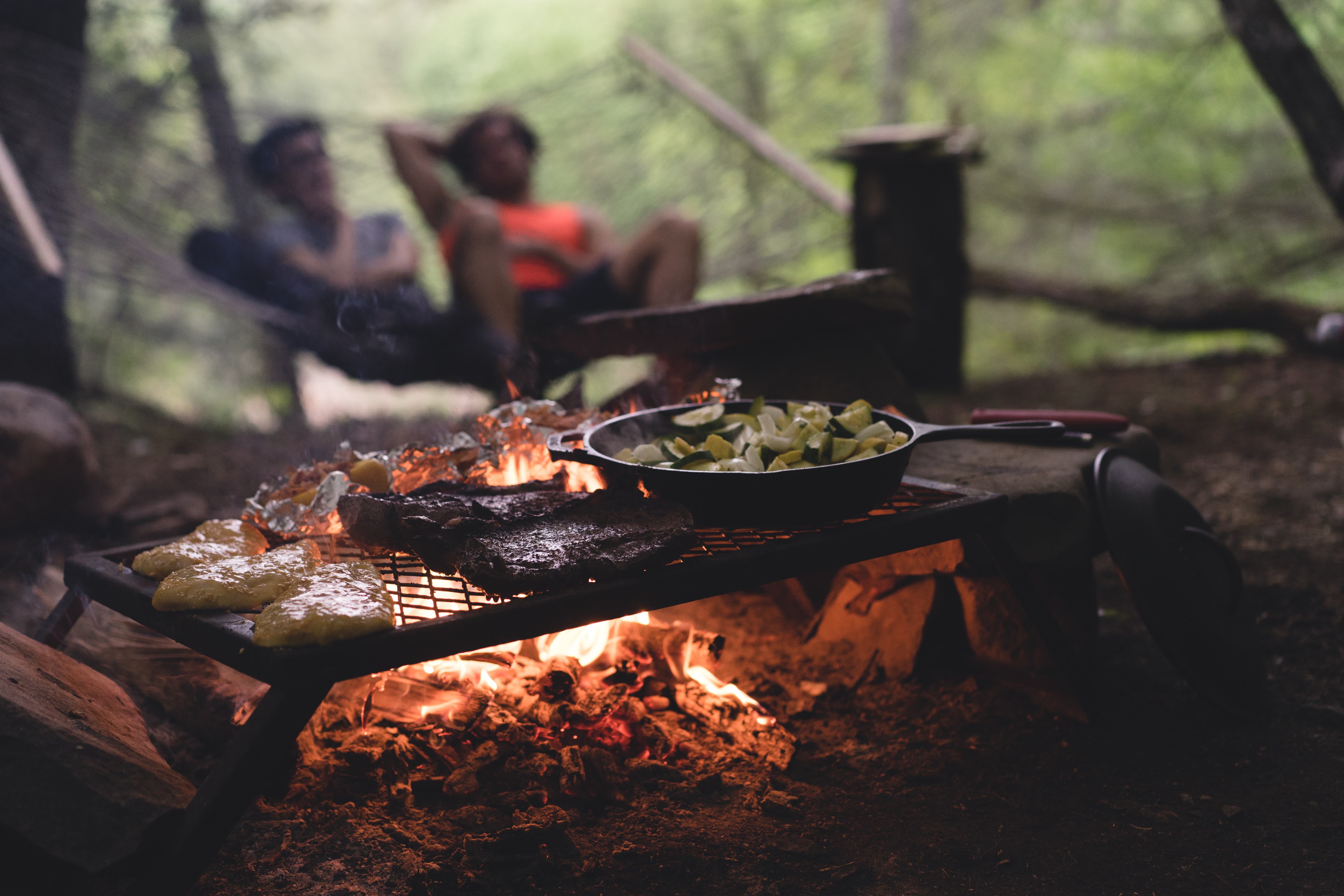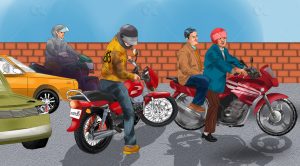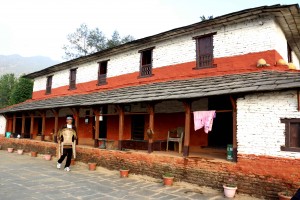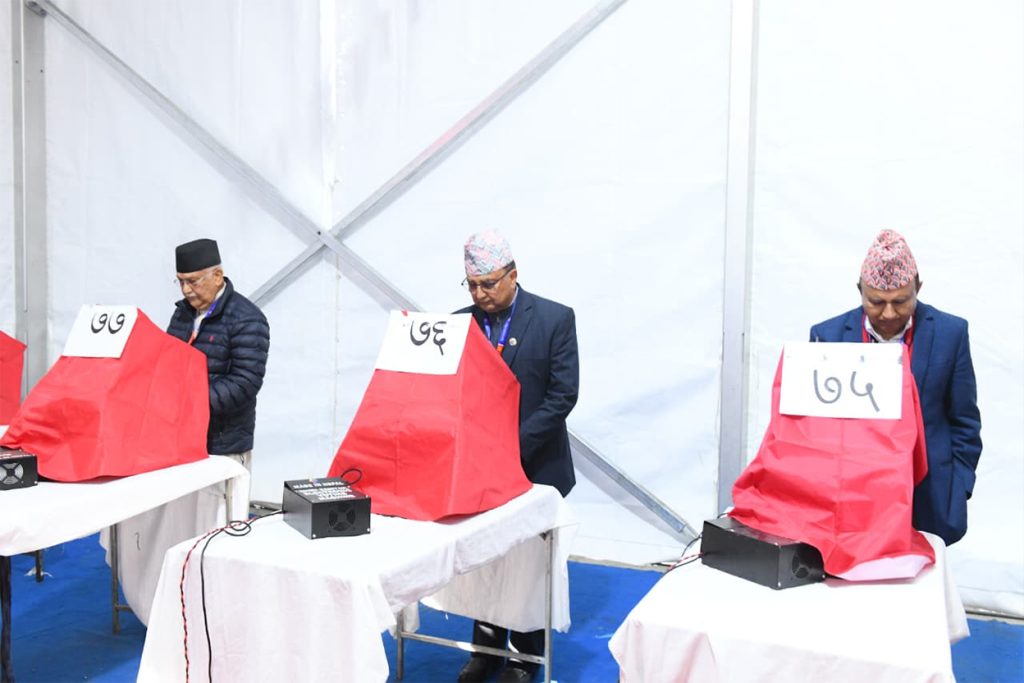The bus wound further and further up into the hills until Pokhara’s Phewa Tal was no more than a silvery puddle in a bowl of green hills. Then the road descended into the northern side of the hill and we were on a road with a patina of dew.
The ticket collector called our stop. This was Nayapul, the starting point for the famed Poon Hill trek. Wai-Wai noodles and Snickers bars were conspicuous on the shelves of the few shops there. When we asked about the trail to Poon Hill, we were told to continue down the rutted dirt road we were on.
Poon Hill is almost intoned like a mantra when people in Nepal’s cities sit down to decide on a trekking destination. I had heard friends tell me about their friends who had gone there and had a swell time. Flip guidebooks and there would be a sizeable section on the trek. It was a travel agency’s most sellable trip. I was not so much enticed to go there as curious to know if it lived up to all the hype. And there was a part of me that hoped to find the place an utter exaggeration, so that every time someone named it as a wonderful trek, I’d retort, It’s overhyped!
(Left to right) An elderly woman along the trail; Photo: Wikimedia Commons. Dishes set up at a restaurant in Birethanti. Wai-Wai noodles and Snickers bars are conspicuous on the shelves of shops along the trail; Photo: Wikimedia Commons. Ghorepani, the ‘base camp’ to Poon Hill, is a complex of stone houses with blue tin roofs that is redolent of British Raj era houses in Indian hill stations; Photo: Wikimedia Commons. (Opener) The glow of the morning sun filters through prayer flags strewn at Poon Hill; Photo: James C Farmer/Flickr.
Walking for some thirty minutes along a river, we came to an iron bridge festooned in prayer flags. Across the bridge was Birethanti, where a lovely choice was on offer: A dirt road for vehicles and a narrow flagstone trail. We paid our entry fees into the Annapurna Conservation Area. As we hung around the ticket booth perusing brochures, a man asked us where we were headed. Hilé, we told him. He sprang up from his chair and almost pushed us on to the trail. “What are you dillydallying here for then? You won’t get to Hilé in daylight if you don’t get going.” With that admonishment we stepped into Annapurna.
Within minutes we were seeing images that seemed to have leapt out from the brochures. We found ourselves walking through a village of slate-roofed houses, with protruding balconies oozing with bougainvillea and orange trumpet creeper. There were terraced fields and gurgling brooks, shepherds with their goats and villagers with contagious smiles bent under baskets of grass. But this was rustic charm, the walk like going from one village to the next. I expected a trek to be about rugged terrain, the less peopled the better. And where were the calf-killing climbs that are a prelude to silence-inducing vistas? We could have been walking on the outskirts of Kathmandu. As if to corroborate this view, a jeep stuffed with people grunted by once in a while.
There wasn’t enough of the wilderness to impart a sense of having got away. The only excitement I got in the first two hours after Birethanti was the sight of a waterfall and the fact that it was getting dark and we had no idea how far away we were from our night halt.
Within minutes into the Annapurna Conservation Area, visitors are greeted with images that seem to have leapt out from the brochures; Photos: Author.
In the last shred of daylight, I saw a painted signboard with a name on it and an arrow pointing to a flight of stone stairs. At the top of the stairs was a sight to lift any trekker’s spirits: an entire street of traditional wooden houses, with signboards advertising shower and food and drinks. That night, heaven went by the name on the signboard: Hilé.
***
We got to the end of Hilé and sat on a large rock outside a wooden house. There was 14 hours of scheduled power cuts in Kathmandu then. Our eyes drifted to the wondrous sight of houses aglow with electric lights. A man came out wearing a white sash, a Dhaka topi, and a smile that seemed to be etched onto his face. This was the owner of the lodge, and the sash was part of the traditional Gurung dress. We decided to stay at his lodge. Three Brazilian women were already seated in the tiny dining room. The Gurung man was serenading them with Nepali songs in between sorties to the kitchen to haul in hors d’oeuvres and the local firewater made from millet. It was a scene from a classic evening on a trek.
The ‘trek’ part of the trek began the next day. First up was Tikhedhunga, a vision of sorts with a serpentine staircase going up to a gateway draped with orange trumpet creeper. There were mountains with powdery snow on them in the background. Up and up the stairs went and everything man-made in the landscape – villages, terraces, bridges – was dwarfed by hills and mountains. We had climbed no more than fifteen minutes after Tikhedhunga when we spotted a sparkling white peak peering from behind two intersecting ridges. It looked like a giant’s canine that had been doused in tooth bleach.
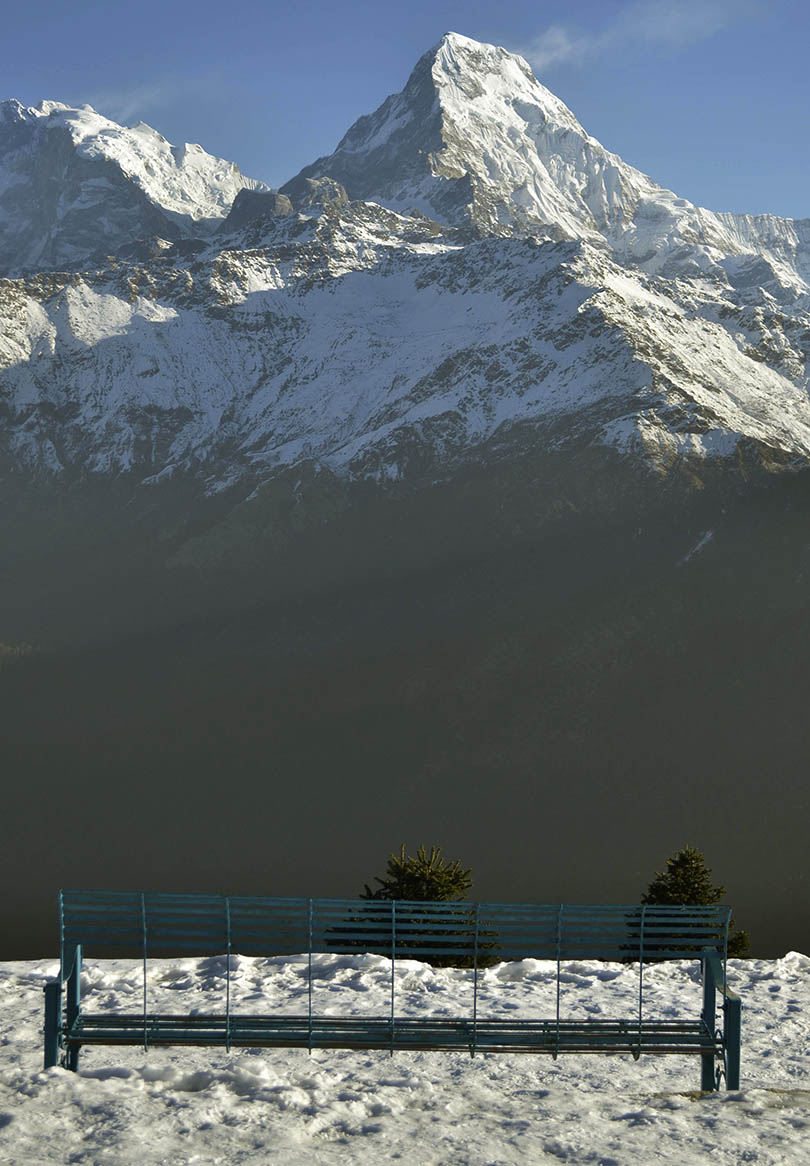
Shortly after the glimpse of the dazzling massif, we arrived in a small village called Banthanti. Here we saw the part of Machhapuchhre that is shaped like a fish’s tail. Then the mountains went out of view as we entered a forest. It felt like trekking through a land in hibernation. Snow lay everywhere — on steps, weighing down trees, carpeting bridges. We were the only things moving in it.
Bantering and sauntering we arrived in Ghorepani, our night halt. This was the “base camp” to Poon Hill. The first building one sees here trekking in from Tikhedhunga is a huge complex of stone houses with blue tin roofs that is redolent of British Raj era houses in Indian hill stations. The plume of smoke meandering heavenward from this building gave the impression that this was a place with a laid back way of life. Walking past it we saw that the building was a community health clinic. We arrived in Ghorepani just in time to catch the mountain tips glow and go out like embers.
People trek to Poon Hill for the sunrise. The trekker’s rite is to wake up in the dark, trudge up for half an hour to Poon Hill and wait there, shuddering in the cold, for the day’s first light to paint the mountains. My friends and I awoke several times in the night, but went back to sleep when we saw that it wasn’t time yet to head for the hill. In the end we slept through and awoke only when it was light. But we still went to Poon Hill. As we lumbered up the stone steps, made treacherous by the ice on it, we passed hordes of trekkers coming down. “We are going for the sunset,” I joked after one too many of them had looked at us and smiled bemused smiles.
At Poon Hill, mountains make up the northern horizon, from east to west. (Clockwise) Photos: Matt Zimmerman/Flickr; Julieanne/Flickr & Nameless_One/Flickr.
We missed the sunrise, but we got an idea of why people brave the morning cold to walk up to the hill. Mountains make up the northern horizon, east to west. It was enough to be there, to stand before the mighty Himalayas, to gaze at peaks that one had seen on maps. Taking in this scene we didn’t feel for a second that we had missed out on something by sleeping past dawn. The only way you miss out on anything about Poon Hill is by not getting out of bed to trek there.
Checklist
Getting There

Buses leave at regular intervals for Baglung from the New Bus Park in Kathmandu. Although you can take a bus to Pokhara and then take another bus or a taxi to Nayapul, this takes up valuable time and costs more.
Itinerary
![]()

Wikimedia Commons
Day 1: Kathmandu to Nayapul to Hilé or Tikhedhunga
From the New Bus Park in Kathmandu, take the early morning bus to Baglung. You will need to get off at Nayapul then walk to Birethanti. Entrance fees need to be paid here. From Birethanti two hours of fast walking will get you to Hilé. Another 20-30 minutes if you wish to go on to Tikhedhunga.
Day 2: Hile/Tikhedhunga to Ghorepani
Although there is not much climbing in this day’s trek, the walk from Hilé or Tikhedhunga to Ghorepani takes almost eight to nine hours.
Day 3: Ghorepani to Tadapani
If you don’t want to take same route you came on, then there is the option of going via Tadapani. It’s a mostly downhill trek to Tadapani from Ghorepani. The trail can turn treacherous in winter when the snow freezes on the trail, turning it into an ice rink. Other than that, it’s a lovely walk through forests and ravines.
Day 4: Tadapani to Pokhara
It’s possible to go all the way to Pokhara from Tadapani in a single day, but you need to set out early in the morning. There is a chance Ghandruk’s beauty will cost you an hour or more. Actually the poster village of the Annapurna region deserves at least an entire day in the itinerary. But if you choose to go on there is a bus station of sorts an hour down the trail. You can take any of several jeeps or buses going to Pokhara from there.
Where to Stay

Just its homeliness and owner’s banters are reason enough to stay at the Deepak Guesthouse in Hilé. In Ghorepani, stay at Hotel Tukuche Peak View for the luxury of mountain views from your bed.
***
Read also
Five reasons why Mardi could be the next Annapurna Base Camp
In Photos: As the flagship trek to the Himalayas, Everest is ready to welcome visitors
Gosaikunda: The Lake Behind the Snowy Pass









